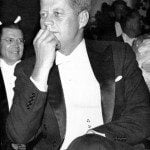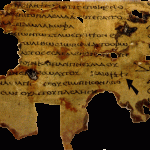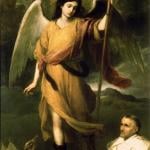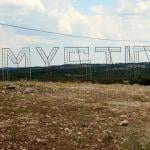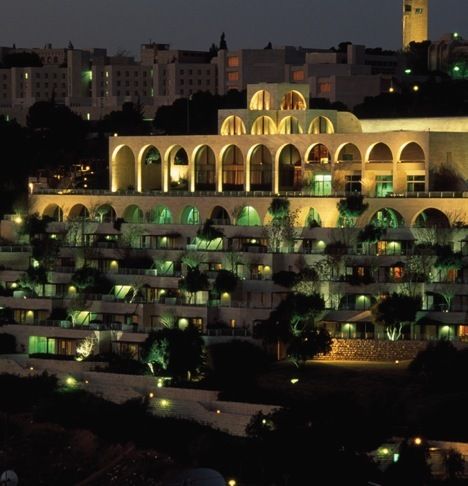
We’re just back from a really fantastic evening at Brigham Young University’s Jerusalem Center for Near Eastern Studies, put on especially for our group, which is the National Advisory Council for BYU’s Marriott School of Business.
After a brief tour of the grounds, we had an excellent evening meal out on the patio of the Jerusalem Center, with its incomparable view of the Dome of the Rock, the Temple Mount, and the Old City, toward the west across the Kidron Valley (the King James Bible’s “brook Cedron”).
Then we listened, in the main hall of the Center, to a history by Jim Kearl of the Church’s involvement with the Holy Land from the time of Orson Hyde’s historic visit in 1841 through the construction of the Jerusalem Center. Jim has been the assistant to the president of BYU for the Jerusalem Center since — incredibly — 1989.
Following Jim’s presentation, we enjoyed a special concert in the Center’s main hall, which also has a marvelous view of the Old City. By this point, the Dome of the Rock was beautifully illuminated, as were the Old City’s early-sixteenth-century Ottoman walls, built by order of the Sultan Suleiman the Magnificent.
The first part of the concert involved a duo consisting of Asi Matathias on the violin, accompanied on the piano by Victor Stanislavsky. They played Camille Saint-Saëns, Sonata in D minor op. 75, and Pablo de Sarasate, “Zigeunerweisen” (“Gypsy Airs”) Op. 20. Matathias’s playing was breathtaking. His speed was phenomenal, and his tone had an almost unearthly quality. He received an enthusiastic standing ovation.
The soprano Keren Hadar then provided a dramatic change of pace, again accompanied by Victor Stanislavsky. She sang the chorus of the Hebrew slaves from Verdi’s Nabucco — interestingly, in Hebrew — followed by Gershwin’s “It ain’t necessarily so” and Michel Legrand’s “Windmills of Your Mind” and then by Carlos Gardel’s and Alfredo Le Pera’s famous tango “Por una cabeza.” (Gardel and Le Pera, I learned, were killed in a 1935 plane crash at the height of their careers, just weeks after they had written the song.) She finished up her part of the program with “Life is Beautiful,” from the film of that name, Aretha Franklin’s “I say a little prayer for you,” and two encores: One of them was in Hebrew and I didn’t catch its name, while the second was Leonard Cohen’s “Hallelujah.”
Keren Hadar was personable, lively, dramatic, funny, and very, very good, and she too received a standing ovation.
Posted from Jerusalem, Israel



